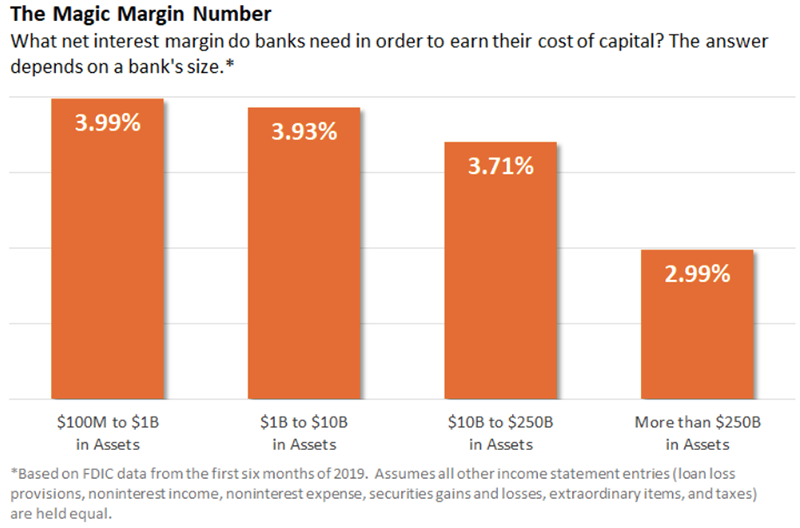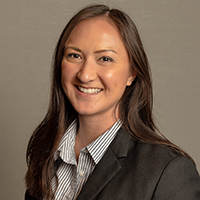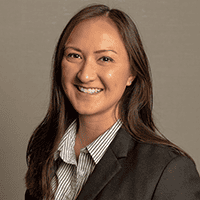
The Magic Margin Number Needed to Satisfy Investors
The low rate environment has
brought community banks’ net interest margins into sharp focus. It turns out,
there might be a number they should aim for.
“We think you need about a 350 basis point
margin to run a bank,” says ServisFirst Bancshares Chairman and CEO Tom
Broughton III, calling that figure “the bare minimum.”
The net interest margin indicates how much a bank earns from its portfolio of earning assets – mainly, loans and securities. While it matters to all banks, it matters most to institutions that make most of their revenue from lending, rather than fees.
ServisFirst, which has $9 billion
in assets, recorded a NIM of 3.36% in the third
quarter, down slightly from the second quarter’s 3.44%. Broughton says the
Birmingham, Alabama-based bank is stabilizing its margin by focusing on deposit
costs, but aims for a NIM of 400 basis points.
Margins have been under
pressure for years. ServisFirst’s NIM was in line with the industry average
of 3.35% for the third quarter, according to the Federal Deposit Insurance
Corp. The regulator cited a “challenging interest-rate environment,” the flat yield
curve and funding costs that are increasing faster than earning asset
yields as driving industry NIM compression.
Executives at many banks today
probably wish those factors were reversed, and that their NIMs were higher. But
is there a baseline, minimum NIM that banks should aim for? And if there is, is
it the same for all banks?
A Bank Director analysis found that banks with between $100 million and $1 billion in assets that want to earn a 12% return on equity, a measure often cited as the cost of capital for a typical bank, should aim for a net interest margin of 3.99% in the current environment. At banks with between $1 billion and $10 billion, that figure is 3.93%. That figure decreases as banks increase in size and generate a greater proportion of their revenue from noninterest income. Banks with more than $250 billion in assets should aim for a NIM of 2.99%.

These numbers are helpful benchmarks, as experts point
out that the magic minimum NIM number is based on a number of assumptions and
variables. “There is no magic NIM for every institution,” says Matthew
Pieniazek, president of Darling Consulting Group. “If somebody argues it,
they’re talking about [their bank]. NIM is relative and is relative to a
battery of things.”
Pieniazek says executives should
figure out “what is the minimum level of acceptable sustainable performance” of
their bank, given variables like loan and deposit mix and cost structure, and
peg their minimum NIMs to those levels. They need to consider what key metrics
to focus on and what sort of risks or moves they are willing to take.
An acceptable NIM may also vary on the orientation of the institution, says Terry Wise, analyst and consultant at Banking Strategist. Commercial banks may have a lower yield on loans that is offset with lower expenses from a branch-light footprint, while retail banks may have higher branch costs but cheaper deposits. Overall, he says community banks have done an “excellent job” of managing their margins.
“It’s hard to look at a specific
number, that 350 basis points is the absolute minimum a bank needs to be
viable,” he says. “There are banks out there that are extraordinarily good at
managing their expense base, so they could live with that slightly lower net
interest margin.”
One challenge to ServisFirst
defending and increasing its NIM is a refrain that will be familiar to many
banks: stiff competition in the lending markets.
“If you start [a loan] with a number in the 3s, you’re certainly going to have a margin less than 400 basis points,” Broughton says. “We can’t control what other people do. If we miss on a deal, we just move onto the next one.”
More banks may be making similar
choices, or unwilling to make dramatic moves that would increase the margin. Pieniazek
says he could increase the NIMs of any bank in the country by shrinking its balance
sheet, getting rid of high-cost funds and shedding low-yielding assets. But the
downside to doing so is that would hurt return on equity and earnings per
share.
“You’ve got to be careful when you look at NIM,”
he says. “I can’t pay bills with NIM, I pay bills with real cash flow.”



